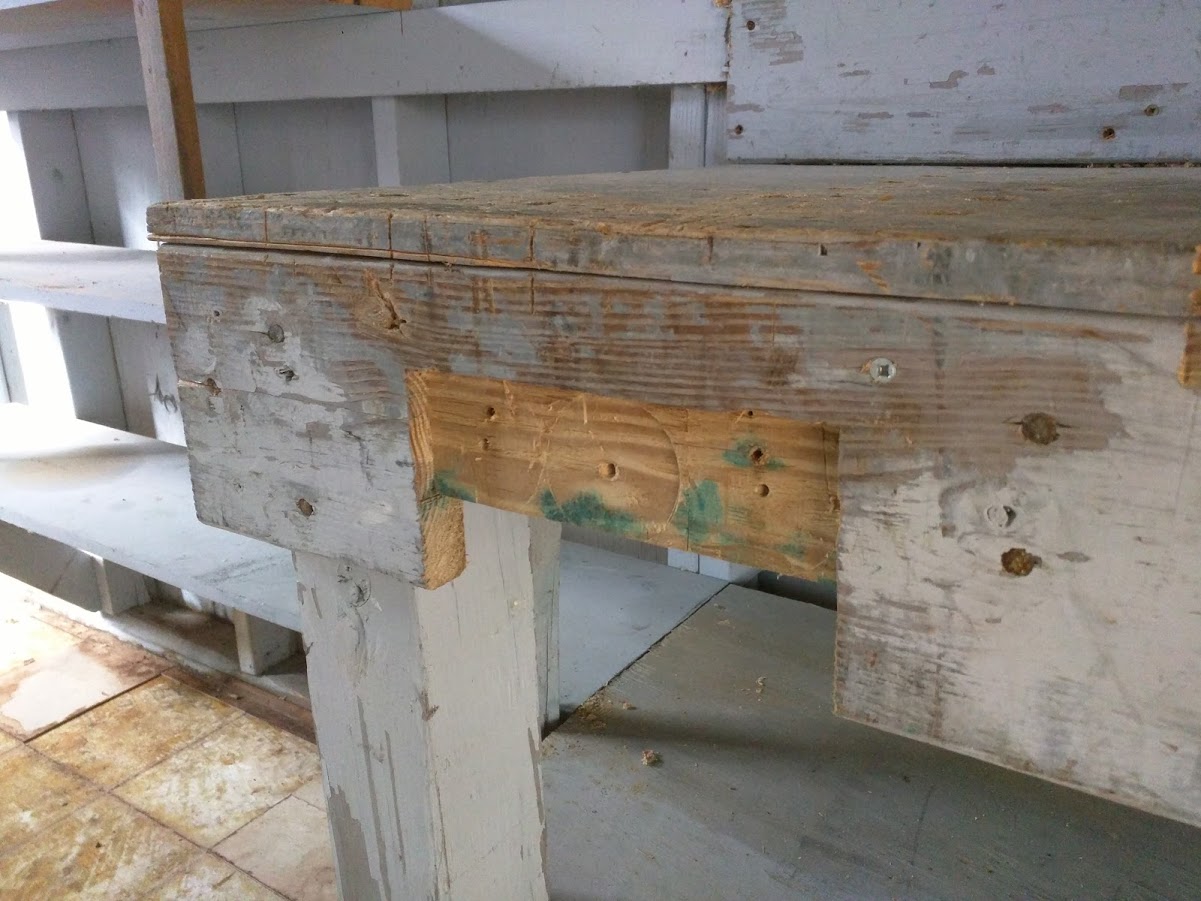After reflecting upon the past shops that I’ve inhabited and exploring some of the more appealing the shops of my fellow woodworkers, I thought long and hard about my own priorities. Much like when home-buying, it’s easy to let your imagination run wild, but there is a delicate balance to be achieved. Inflation of the footprint and architectural finery are appealing, but they add time to the build (and subtract time that I get to spend in the shop). But an unattractive or too-small shop is something that I would regret every time I stepped inside.
The basic principles that I came up with are thus:
Enough is enough. As noted previously, I’ve worked in shops that ranged from 192 sq.ft. to 900 sq.ft. I have not found the functionality of a shop to be strongly correlated with the size of its footprint, but I know well enough that a shop less than 200 sq.ft. won’t comfortably hold the equipment that I wish to use. Curtis Buchanan uses an equipment mix that appeals to me, and if he has been happy with a 16’x20′ shop for more than two decades, it stands to reason that I should as well. My shop will be at least 320 sq.ft., and not much bigger.
It’s not a garage. Every workshop that I’ve ever used has been a multi-use space for storage and disparate hobbies. In addition to woodworking equipment, the workshop served as a repository for electrical and plumbing tools, lawnmowers and oil-changing supplies, even Christmas ornaments and Easter baskets. No more. My workshop will not be a garage, but a woodshop, and I will reserve the same ire for extraneous appurtenances that Baptists reserve for halter tops in the sanctuary. To that end, one requirement will be a large lean-to to keep lawn mowers, fertilizer, tillers, and 2-cycle engine oil away from my dovetail saw.
Tradition is timeless. Yeah, I know that metal buildings are cheap and they go up in two days. I don’t care. I’m not going to look at this in my backyard every day for the rest of my life:

But that doesn’t mean that I aim for pretension or excess (looking at you, Victorians…) Rather, I’m drawn to the clean, simple look of rural farm buildings, built by competent craftsman who were skilled at balancing aesthetics with expediency and functionality. Something like this:

Red Barn
No sweat. I have never had the pleasure of working in a climate-controlled shop. Three out of four seasons, that’s not so bad. Spring and autumn are lovely in the South, and winter is easily addressed with an extra sweater on all but the most frigid of days. But summer will turn a tin-roof shack into a sauna (sans the naked Swedes). No more. My shop will be insulated, air-conditioned in the summer, and heated by wood stove in the winter. The more stable interior environment will not only be more pleasant, but also reduce wood movement as furniture moves from the workshop to the house.
Don’t let the sun go down on me. Natural light is important, but it’s not all created equal. I once had a shop in North Georgia with a dramatic southwest-facing view of the valley below and the mountains beyond. I foolishly placed my workbench directly beneath the window and quickly learned that the harsh late afternoon light was more hindrance than help. My shop will have big windows located on the northeast and northwest sides of the shop, with workbenches located beneath.
Let’s get high. Low ceilings suck. I once worked in a shop with 7′ ceilings. You can imagine how fun it was to work with 8′ lumber in there. Nine feet is the bare minimum for a workshop ceiling. Ten is better. Any higher than that approaches overkill, unless you’re doing specialized work that requires it. It’s nice to have a rafters low enough to hang your patterns – just ask Peter Follansbee.

Wood is good. Concrete floors suck. They’re hard on the knees and feet and even harder on your chisels and planes when you drop them. They’re an invitation to rot for any wood that touches it. My floor will be wood – no exceptions. And continuing with the idea that aesthetics are important, I also have a strong preference for wooden wall paneling. Wood is warm and attractive, and it makes a woodshop look like a woodshop. It also make it easy to hang tools on the walls – no sheetrock anchors required.
Lofty goals. I don’t think it’s a coincidence that all of the workshops I shared in the last post have storage lofts. No matter how hard I try to keep my workshop free of clutter, the truth is that it’s impossible not to accumulate infrequently-used templates and jigs and special odds and ends of wood and hardware. A small space for these items, out of the way and above the main workshop area, is a privilege that I’ve never had but would like very much to experience.
And finally,
Inside out. Flip open a copy of Better Homes and Gardens, and you’re likely to find advice on designing your home to ‘bring the outside in’. Well, I want just the opposite. A comfortable porch to set out my shavehorse, sawbenches, or hewing bench when the weather is pleasant is high on my wish list.
















































































